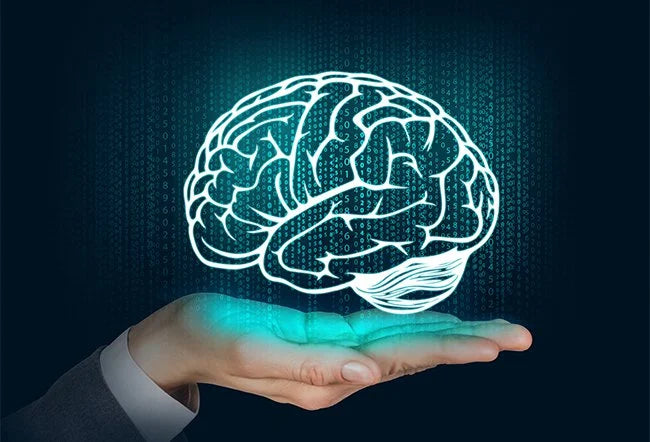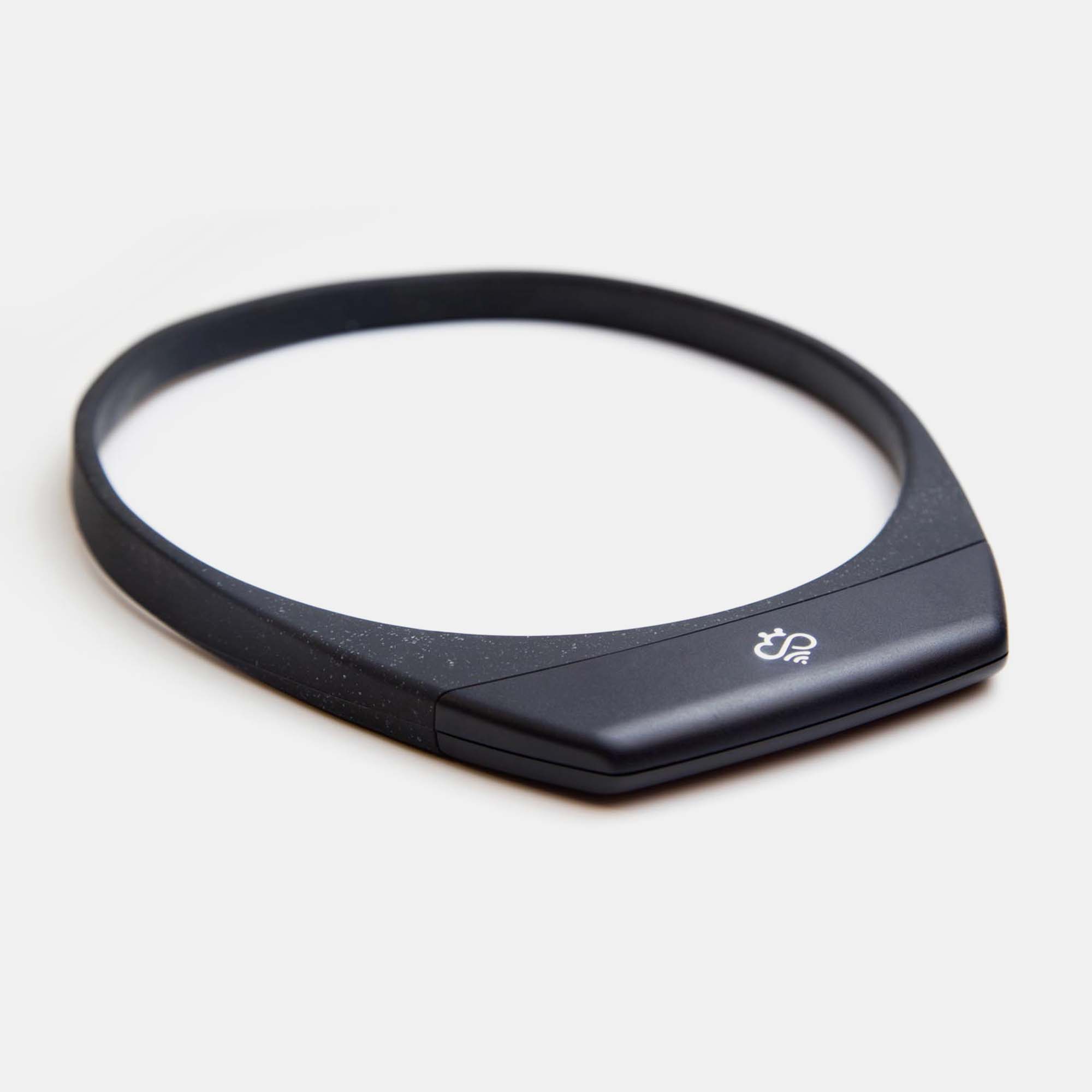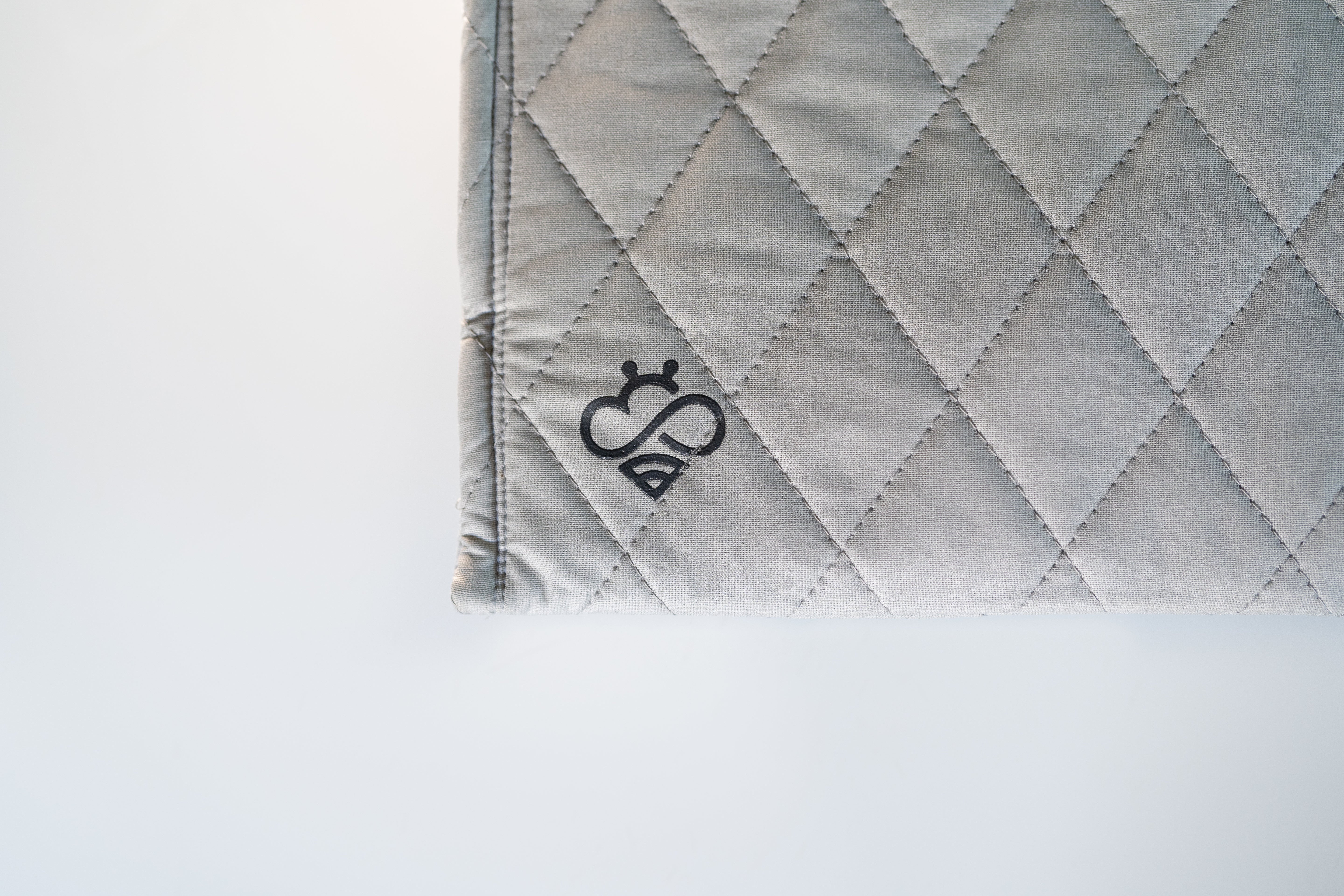Initial Results
Last Updated 5/3/2022
Abstract
- Hapbee digitally mimics the effects of specific compounds (like caffeine and melatonin), without having to ingest or source the real versions.
- Hapbee uses cutting-edge, patented recording and bio-streaming technology to capture & recreate the natural magnetic fields recorded directly from molecules.
- Hapbee’s tiny magnetic fields are “heard” by bio-receptors in cells to recreate the natural magnetic stimulation produced - creating the sensations without the long-lasting side effects.
- Hapbee surveyed existing users to share Oura Ring sleep tracker data from our customer base - 46 responded, 31 provided sleep data that was usable for at least one field
- Users uploaded historical Oura Ring sleep data spanning 5 months giving thousands of sessions to compare the difference in users’ sleep data on days and nights when different Hapbee blends were used versus days and nights where no Hapbee stimulation was used.
- Oura Ring natively provides a suite of directly measured and algorithmically generated daily measures in total, our analysis focused on a primary set of 10 measures and contributors most closely related to sleep including:
- Sleep Score, composed of:
- Total Sleep Score
- REM Sleep Score
- Deep Sleep Score
- Sleep Efficiency Score
- Sleep Timing Score
- Restfulness Score
- Sleep Latency
- Restless Sleep
- Total Sleep Duration
- Total Bedtime
- Grouping all user sessions there were significant correlations between using Hapbee signals on a given day and improved sleep scores
- Using the melatonin signal increased Sleep Score, REM Sleep Duration
- Using the adenosine signal increased Sleep Score
- Using caffeine during the day
- There are several possible explanations
Introduction
Benefits Hapbee Provides
- Hapbee can deliver a variety of magnetic bio-streams (molecular signatures) derived from natural compounds that can be used to optimize Sleep, Mood, and Performance.
- A digital, non-chemical, non-ingested alternative that can supplement or replace more harmful habits and stimulates many of the same natural processes without the nasty, long-lasting side effects.
- Full control over when the effects begin and how long they last.
Safety - Background
Hapbee technology uses the lowest end of the magnetic spectrum - ultra low radiofrequency energy (ULRE) - which safely passes into the body
All electronics that use electricity (mobile phones, wireless headsets and earbuds, speakers, wifi networks, toasters, etc) create magnetic fields [Healthline Report on Home EMF].
According to a study (by the Long Island Power Authority) on how much magnetic field radiation various home appliances emitted, hair dryers emit EMF radiation in the following amounts at the following distances:
- 1 Inch Distance: 60 mG – 200 mG (milliGauss)
- 1 Foot Distance: .1 mG – 1.5 mG
- 3 Foot Distance: <.1 mG
Hapbee’s electro-magnetic output averages near 20mG, or less than a third of using a standard hair dryer. For reference, the wireless charging magnet inside the iPhone 12 has been measured at 10G, almost 500 times more energy emitted than a Hapbee headband.
The Hapbee Neckband produces effects in a volume around the device that creates a homogenous, small magnetic signal.
Safety guidance by the International Commission on Non-Ionizing Radiation Protection (ICNIRP) sets acceptable limits for people based on the frequency range for any magnetic fields. Hapbee’s frequency range ( 0-50kHz) is less than 10% of the safe limit (90% below) at its highest output level and significantly less over most of the spectrum:
Additionally, the user has the ability to maintain complete control over usage through a mobile application. The user can turn the device off, and the sensation will diminish in minutes.
Hapbee technology is unique in that it can recreate the action of a variety of different compounds and classes of interactions. These interactions appear to be non-covalent in nature, aligning with the hypothesis that we can recreate most molecular interactions that are controlled by charge transfer.
To understand how Hapbee signals work at a cellular level, Hapbee’s technology partner performed a series of experiments looking at how the biostream signal of a small compound might be able to disrupt a standard cellular growth model as compared to the known effects of the physical chemical.
Partnering with Swedish Neuroscience Institute and UCSF, exposing cells to the growth-limiting signal they were able to show that the growth factor disrupting signal was able to reduce cancer cell growth rate comparably to the source disrupting drug molecule as validating by both protein and siRNA
So far we've published three scientific papers illustrating the scope of interactions we can replicate. This academic work shows that the ulRFE technology can be used to replicate:
- Small molecules that interrupt cellular structure to disrupt cancer cells [Butters 2014]
- Molecules that can reduce algae growth [Butters 2017]
- Small-interfering RNA (siRNA), much larger compounds that can interrupt a protein pathway important for growth [Ulasov 2017]
- Recently, ulRFE recordings from pain compounds have been shown to out-perform some of the source compounds in standard animal pain models [Data release 2021]
Methods
Users were surveyed via email, social media, and asked to submit 5 months of historic sleep data from their consumer wearable sleep tracker of choice in exchange for early access to upcoming Hapbee sleep product launches.
Users uploaded free-form data from their personal sleep tracker, the Oura Ring. Hapbee provided a list of desired sleep data fields and instructions; however not all users provided all data fields. Sleep data was requested for the period 9/1/21-3/1/22.
46 Users responded to the survey providing survey responses. 35 Users provided Oura Ring data with at least one data field.
Sleep data and Hapbee session data linked and de-identified to protect participants’ privacy. Hapbee sessions were denoted by Summary Date to account for overnight usage. Usage data was aligned by Summary Date, a timeshift applied to overnight data to account for Hapbee usage
For each summary date Hapbee usage was binned into a binary measure by signal, a signal-day, as well as a summed measure of using any other Hapbee signals in a summary date (‘Used Hapbee at all’). Signal playback that includes multiple ingredients in a single playback was attributed to both signals. For this analysis the number of signal sessions per day was made binary.
Pearson correlation scores were calculated across a set of primary measures provided from Oura Ring. Grouped means and individual changes were calculated by ingredient and sleep metric. Unpaired, 2 tailed t-tests were used to compare grouped user data by signal usage.
Results
Descriptive Statistics
For each ingredient comparison we compared sleep data from days when an ingredient was played (Signal Session Days) with days when no ingredient was played (Non Session Days). There were many nights where sleep tracker data was missing, giving us a working sample of sleep data days totaling 4623 across 31 users.
The breakdown of Signal Session Days is shown in Table 1.
Table 1.
|
Ingredient |
% of Playback Session-Days |
Signal Session-Days |
Non Session-Days |
|
melatonin |
23.8 |
378 |
4125 |
|
CBD |
16.3 |
341 |
4282 |
|
adenosine |
13.9 |
290 |
4333 |
|
caffeine |
13.8 |
289 |
4334 |
|
theobromine |
10.8 |
227 |
4396 |
|
THC |
7.9 |
166 |
4457 |
|
Nicotine |
7.5 |
157 |
4466 |
|
alcohol |
6.0 |
125 |
4498 |
|
Total Session-Days |
4623 |
Hapbee Signals Improve Sleep Scores
Hapbee created two signals designed to increase sleep quality. The first, a signal derived from melatonin - a hormone known to regulate the sleep-wake cycle and second, adenosine, a compound known to produce sleep pressure, or the desire to fall asleep.
Exogenous melatonin has been shown to increase sleep efficiency using state of the art polysomnography (PSG) measures (5). Oura Ring does not measure efficiency the same way PSG does, but Sleep Score can be used as a proxy given the black box nature of multi-sensor measures (2).
Hapbee Melatonin Signal Effect on Sleep Scores:
Using the Melatonin signal significantly increased Sleep Score from 77.78 to 81.81, p<0.0001.
|
Mean |
N |
Std. Deviation |
|
|
Not Used |
77.78 |
3331 |
11.677 |
|
Used |
81.81 |
378 |
9.309 |
Melatonin Signal - Correlated Improvement across all user day-sessions
r(3707) = .106, p <1e-9
Hapbee Adenosine Signal Effect on Sleep Score:
Using the Adenosine signal significantly increased Sleep Score from 77.93 to 82.87, p<0.0001.
|
Mean |
N |
Std. Deviation |
|
|
Not Used |
77.93 |
3515 |
11.556 |
|
Used |
82.87 |
194 |
9.781 |
Adenosine Signal - Correlated Improvement across all user day-sessions
r(3707) = .095, p < 6e-9
Sleep Score Sub Components
The overall Oura Ring Sleep Score is a blackbox algorithm with some defined inputs. Hapbee use also correlated to improvements in more detailed measures including effects on REM sleep duration.
Using the Melatonin signal significantly increased REM Sleep Duration by more than 13 and a half minutes, from 5390 sec to 6214 sec, p<0.0001.
|
Mean [sec] |
N |
Std. Deviation |
|
|
Not Used |
5390.33 |
2683 |
2112.31 |
|
Used |
6214.18 |
287 |
1963.36 |
Melatonin Signal - Correlated Improvement across all user day-sessions
r(2968) = .115, p <3e-9
Hapbee’s Melatonin signal also reduced the amount of time users spent awake during the night.
Using melatonin significantly reduced nightly Awake Time by 13 minutes, from 1:26 to 1:15 (p=.0094).
|
Mean [sec] |
N |
Std. Deviation |
|
|
Not Used |
4558.44 |
3131 |
3067.54 |
|
Used |
4105.29 |
331 |
2512.68 |
Hapbee Helps Users Fall Asleep Faster
One of the most distressing parts of disordered sleep is waiting to fall asleep.
Hapbee’s Melatonin signal shortened the time users spent falling asleep..
Using the melatonin signal significantly reduced nightly Sleep Latency by almost 3 minutes, from 785 sec to 609 sec (p=.0018).
|
Mean [sec] |
N |
Std. Deviation |
|
|
Not Used |
784.90 |
2524 |
906.14 |
|
Used |
609.00 |
270 |
594.86 |
Hapbee’s Adenosine signal shortened the time users spent falling asleep also.
Using the adenosine signal significantly reduced nightly Sleep Latency by almost 3.5 minutes, from 778 sec to 564 sec (p=.0054).
|
Mean [sec] |
N |
Std. Deviation |
|
|
Not Used |
778.43 |
2657 |
894.90 |
|
Used |
563.65 |
137 |
550.93 |
The most extreme gains were seen lifting a user’s average Sleep Score from 63.65 to 74.14 when using the Deep Sleep blend (+17%) and increasing average REM scores from 56.90 to 84.18 (+48%).
Limitations
The gold standard of sleep measurement is the polysomnograph, or a clinical sleep study. Consumer wearable sleep trackers such as Oura Ring have been validated to approach polysomnograph accuracy however consumer-grade equipment still falls slightly behind clinical tools in terms of sleep tracking capability (2).
The data provided from users was self-generated and lacked consistency across all submissions. The retrospective nature of the data means there was no direction of product usage or sleep tracker usage consistency during the study period. Several user submissions were not included in all analysis due to missing data.
Conclusions
Sleep is crucial for health. About a third of all people struggle with sleeping, a number expected to increase as people spend more time in artificial lights and in front of mobile devices and computers (3). In the first study analyzing the effects of Hapbee ULRE using digital ingredients on sleep outcomes, improvements were seen on a variety of key sleep quality measures. Using ingredients with expected effects on sleep quality like melatonin and adenosine improved consumer wearable sleep tracker scores for quality of sleep as well as time to fall asleep. Curiously, using digital ingredients for wakefulness like caffeine and theobromine also improved sleep quality, perhaps due to users replacing their normal consumption of sleep disrupting compounds like caffeine. Continued research will elucidate the most effective uses, timing, and sequencing of ULRE signals for improving sleep wellness.
References
- De Zambotti, M., Cellini, N., Goldstone, A., Colrain, I. M., & Baker, F. C. (2019). Wearable Sleep Technology in Clinical and Research Settings. Medicine & Science in Sports & Exercise, 1. doi:10.1249/mss.0000000000001947
- Altini, M.; Kinnunen, H. The Promise of Sleep: A Multi-Sensor Approach for Accurate Sleep Stage Detection Using the Oura Ring. Sensors 2021, 21, 4302. https://doi.org/10.3390/s21134302
- Grandner MA. Sleep, health, and society. Sleep Med Clin. 2017; 12(1):1–22.
- Buscemi N, Vandermeer B, Hooton N, Pandya R, Tjosvold L, Hartling L et al. Efficacy and safety of exogenous melatonin for secondary sleep disorders and sleep disorders accompanying sleep restriction: meta-analysis BMJ 2006; 332 :385 doi:10.1136/bmj.38731.532766.F6
- Brzezinski, A., Vangel, M. G., Wurtman, R. J., Norrie, G., Zhdanova, I., Ben-Shushan, A., & Ford, I. (2005). Effects of exogenous melatonin on sleep: a meta-analysis. Sleep Medicine Reviews, 9(1), 41–50. doi:10.1016/j.smrv.2004.06.004
- Oura Ring Sleep Score Guide
Additional Sleep-Related Customer Feedback
“I LOVE mine, for real! I slept for 8 hours in a row this week!” - Cheryl N.
“15% increase in Oura Ring sleep score primarily due to a 4x increase in REM sleep. Wow. You need this thing.” - Leon B.
“I was blown away by the fact it actually helped me sleep. I am getting 2-3 hours more sleep a night. The fact I can also use it for energy and focus is just a bonus.” Tim L.
“Love it for when I need those “me time” moments, 30 minutes alone with my Hapbee and it feels like I have been relaxing for hours.” - Rebecca G
“I had a remarkable demonstration of the Hapbee wearable in a session today. I was meeting with a patient who has been having a complicated recovery after back surgery, infection and muscle grafting. She now has to wear a brace and had to position herself on a couch on her side. Her tension from her pain was visible. We had talked about trying the Hapbee. I set her up with the Strain Relief blend for 30 minutes. I didn’t track the time, but at some point she became more animated, talked more easily and there was a visible change in her physical presentation. It just happened! When the time was up, we were both amazed. She sat up and was more comfortable. She was sold.” - Deborah Uchalik, Ph.D.
Reference Docs
- Grey Team Initial Report
- Clinical Whitepaper
- Animal Behavior Poster
- Ulasov 2017 Benchtop Mechanism Paper
Patents and IP
Hapbee is powered by a technology partnership with EMulate Therapeutics, a medical device company based in Seattle that developed a stimulation platform capable of recording unique magnetic signatures from molecules. These signatures can be replayed (biostreamed) to users using our wearable devices that creates similar effects to the source molecules without having to ingest any chemicals.
The technology is about 15 years in development and Hapbee is building out the exclusive consumer-facing version of the technology platform to complement EMulate Therapeutics development of medical applications.
Hapbee also has patents pending around the existing and future product lines. Patent US7081747B2 illustrates the signal recording process and equipment while US10046172B2 covers stimulation for a variety of product configurations.
There are over 16 US and 47 international patents covering recording and stimulation capabilities [EMulate Patent List].





